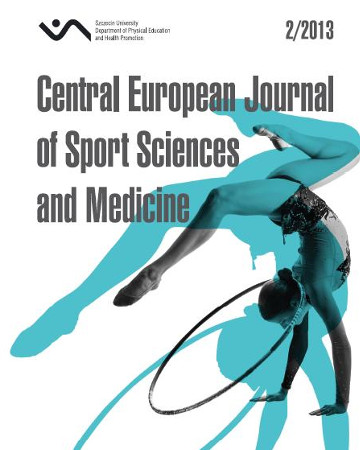
ISSN: 2300-9705
eISSN: 2353-2807
OAI




Lista wydań /
Vol. 2, No. 2/2013
Significance of controlling the intensity of various types of effort in football
| Autorzy: |
Rafał
Buryta
Faculty of Physical Culture and Health Promotion, University of Szczecin, Poland |
| Słowa kluczowe: | aerobic/anaerobic training effort football intensity |
| Data publikacji całości: | 2013 |
| Liczba stron: | 6 (3-8) |
Abstrakt
The problem of evaluating and defining physical endurance of athletes has been the subject of a great body of research and scientific discussion. In team sports, especially football, the energy protection of working muscles in players requires the use of almost all metabolic pathways: aerobic, anaerobic and aerobic-anaerobic. Because of the varying pace of action, the share of energy conversions in muscle cells changes rapidly during a match. Another concern voiced by scientists and football coaches is the question of whether fitness training should always be performed with football balls. The aim of this paper was to present the necessity of monitoring the development of aerobic fitness in football players, and also to answer the question of whether motoric training in football may be performed with balls.
Pobierz plik
Plik artykułu
Bibliografia
| 1. | Bangsbo J. Fitness Training in Football – a Scientific Approach. University of Kopenhagen, Denmark 1994. |
| 2. | Kubica R. Podstawy fizjologii pracy i wydolności fizycznej. Wydawnictwo Skryptowe AWF, Kraków 1995;24:196-204. |
| 3. | Reilly T. The science of training – soccer. Routledge, London 2007. |
| 4. | Sharkey B. Sport Physiology for Coaches. Human Kinetics 2006. |
| 5. | Weltman A. The Blond Lactate Response to Exercise. Human Kinetics, Virginia 1995:1-4. |
| 6. | Weber K. Sportowo-metodyczne aspekty w diagnostyce procesów sterowania treningiem w piłce nożnej. Materiały szkoleniowe PZPN, Warszawa 1998:1-12. |